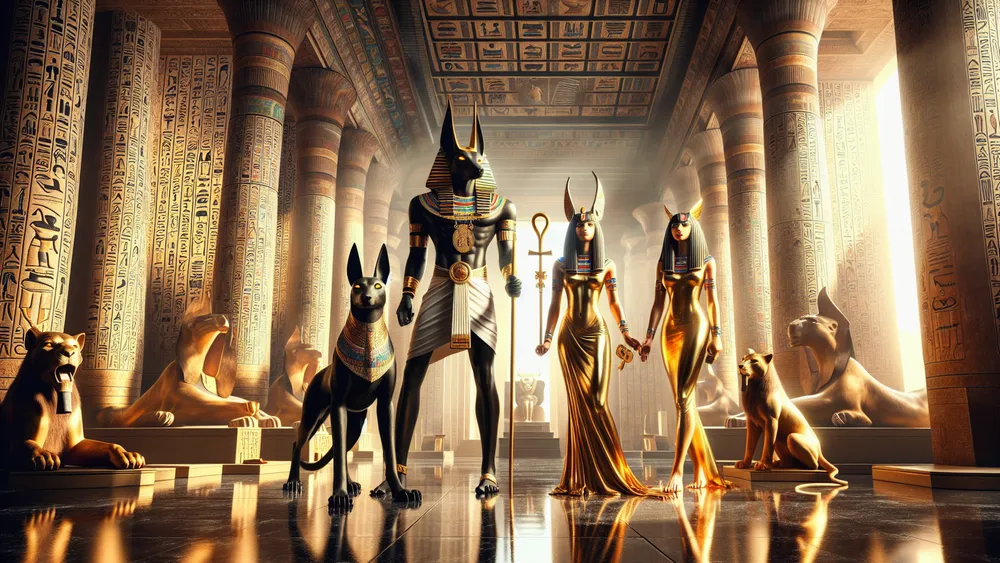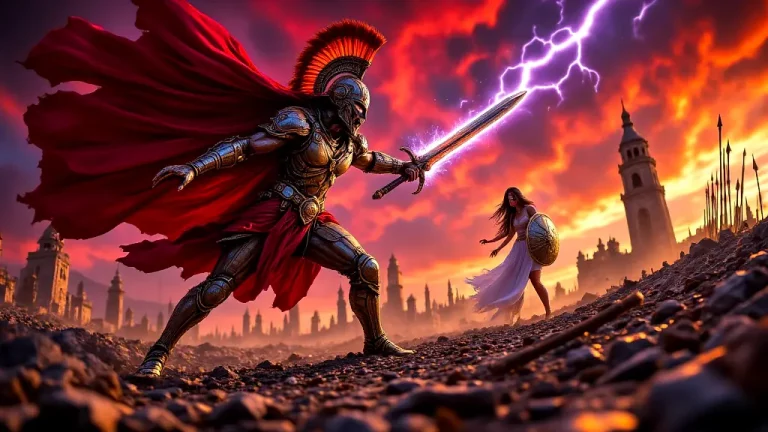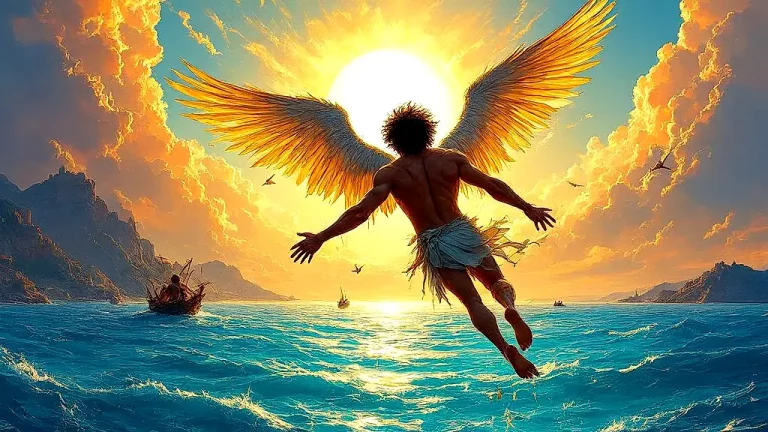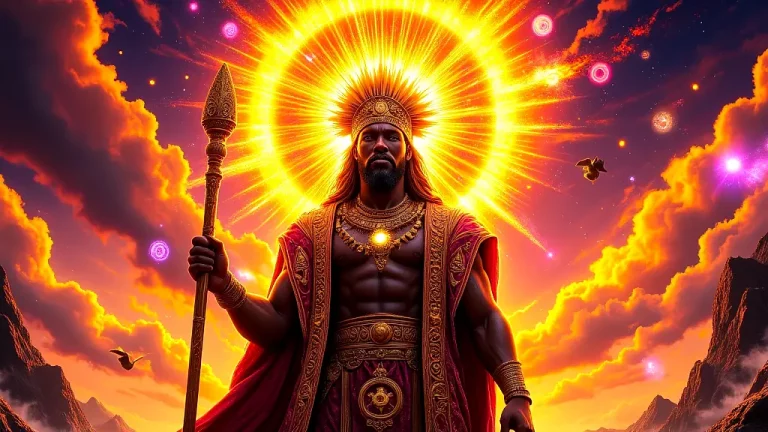Understanding Avatars In Egyptian Mythology
Welcome to our going through avatars in Egyptian mythology. Think about a place where gods and goddesses, like actors in a big play, take different forms and roles to talk to people and send their messages. This post is about avatars – special shapes of gods that have their own jobs in stories and religious acts.
Key Points:
- Avatars in Egyptian mythology are special forms of gods used to communicate with people.
- Avatars are distinct from gods and represent specific traits or perform certain tasks.
- These divine forms have historical origins in ancient Egyptian writings and carvings.
- Avatars play key roles in conveying messages, performing tasks, and displaying virtues.
- Egyptian avatars are symbolically represented in art with animal heads and symbolic elements.
- Avatars are essential in Egyptian religion, bridging the gap between gods and humans.
- Comparisons with avatars in other mythologies, like Hinduism, reveal similarities and differences.
First, we will say what avatars are and how they’re not the same as the gods. Then, we will see where they came from and what they mean in culture. Next, a close look at big Egyptian gods and their avatars comes up. You will also see how avatars fit inside Egyptian stories, the meanings they hold in pictures, and how they’re shown in today’s media.
To finish, we will look at how Egyptian avatars compare to those in other stories and talk about why they matter in religion. So, whether you are new to mythology or know a lot, this guide will give you a full understanding of avatars in Egyptian mythology.
What Are Avatars In Egyptian Mythology: Overview and Key Facts
| Key Point | Description |
|---|---|
| Definition of Avatars | Avatars in Egyptian mythology are special forms or shapes taken by gods to interact with people. They act as go-betweens between gods and humans. |
| Difference from Gods | Although gods are the main beings with big powers, avatars are just specific forms or parts of these gods, often showing particular traits or doing specific things. |
| Primary Roles | Avatars usually send messages from gods, do particular jobs, protect certain things in life, or show special powers or good traits. |
| Historical Origins | The idea of avatars goes way back to old Egyptian writings and carvings, with some early mentions in pyramid texts and carvings in temples. |
| Cultural Significance | Avatars were very important in culture and religion, showing the presence of gods in everyday life and rituals. |
| Key Historical Periods | Avatars were found in many historical periods like the Old Kingdom, Middle Kingdom, and New Kingdom; they were in texts like the Pyramid Texts, Coffin Texts, and the Book of the Dead. |
| Symbolism in Art | Avatars are shown in art and hieroglyphs with visual elements like animal heads, special headdresses, or symbolic things, which show their divine roles and traits. |
| Modern Representation | These days, avatars from Egyptian mythology are in movies, TV shows, and books, often mixed with both historical truth and made-up parts. |
| Theological Importance | Avatars were very important in religion, as they let gods appear in the real world, making divine beings more reachable and understandable for humans. |
| Comparison with Other Mythologies | The idea of avatars in Egyptian mythology can be looked at next to similar ideas in other cultures, like the avatars of Hindu gods, showing both different and similar parts of divine forms. |
Let’s Jump into Egyptian Avatars
Now that we have a basic idea of what avatars are in Egyptian mythology, let’s look into their different parts in more detail.
What Are Avatars in Egyptian Stories?
In Egyptian stories, avatars are special forms or shapes taken by gods to deal with the world of people. But gods themselves, who are the main gods with big powers and areas, are different from avatars because avatars are parts or roles these gods take. View avatars as characters in big stories or actors in plays, each with a job and function. Avatars do several key things in mythology:
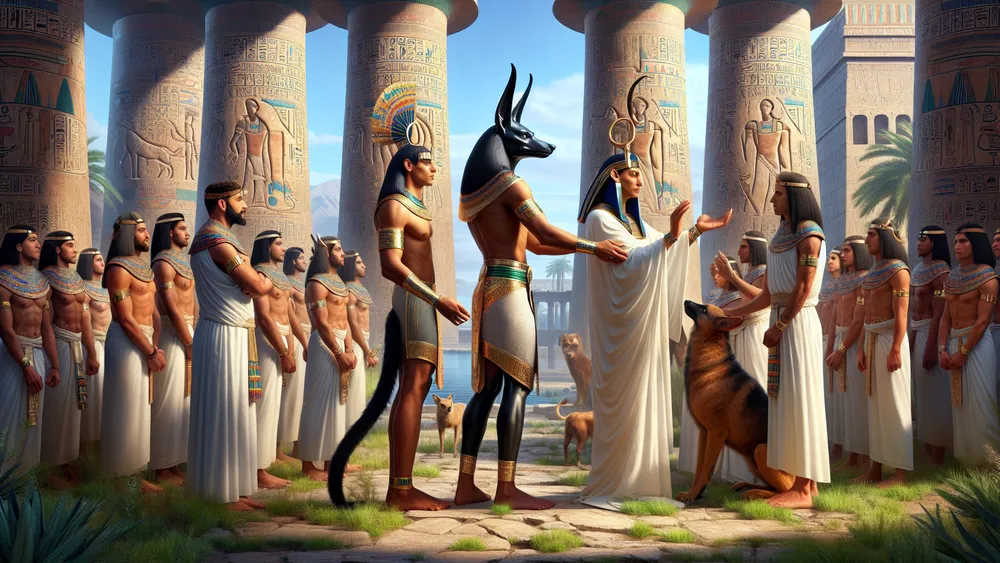
- Carrying Messages: Avatars often act as go-betweens, giving divine messages to humans.
- Doing Tasks: They do special tasks or missions for the gods.
- Showing Virtues: Avatars stand for certain virtues, powers, or traits of the gods they show.
By taking these forms, gods made their presence and influence felt in the world of people, guiding, protecting, and dealing with their followers in a more clear, tangible way.
Gods in Egyptian mythology use avatars to interact with humans by delivering messages, performing tasks, and demonstrating virtues, making their presence known and guiding their followers more effectively.
Where Did Avatars Come From?
The idea of avatars in Egyptian stories starts in some of the oldest writings and carvings, like the Pyramid Texts from the Old Kingdom time. These texts, cut into the walls of pyramids, have spells and sayings that tell of gods taking on other forms to deal with the world of people. The importance of avatars in old Egypt is huge; they acted as key links between the divine and human worlds, letting gods show their will and presence in a clear way. Important times and writings where avatars are clearly seen include:
- Old Kingdom: Pyramid Texts
- Middle Kingdom: Coffin Texts
- New Kingdom: Book of the Dead
These times and writings reveal the ongoing importance of avatars in Egyptian religious life, showing how the idea changed and stayed central to the spiritual life of ancient Egyptians.
Who’s Who Among Egyptian Gods and Their Avatars
To get a better idea of the connections between Egyptian gods and their avatars, here’s a table with some important gods, their matching avatars, and what each avatar stands for. This shows how each god’s power and attributes are shown in different forms for particular purposes.
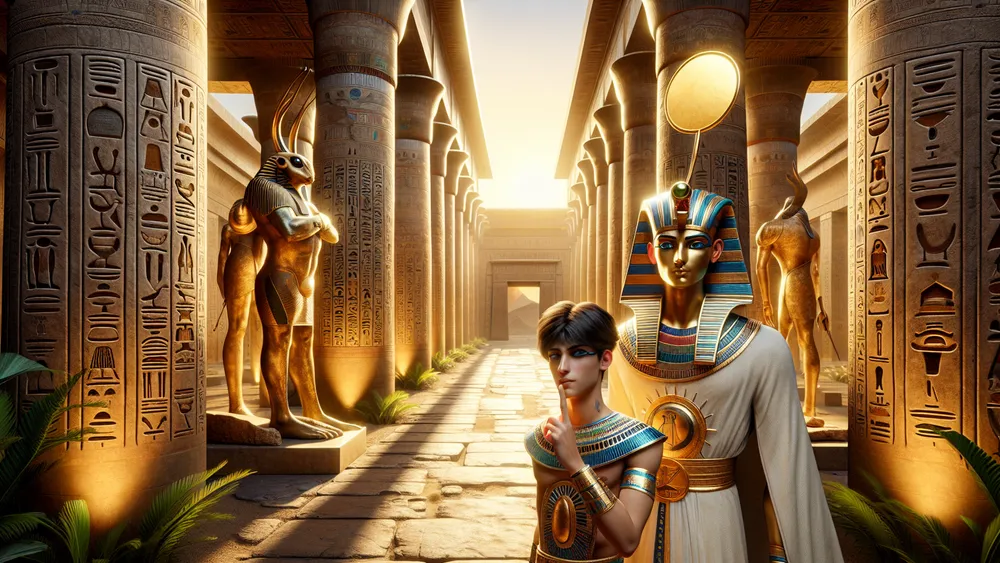
| God’s Name | Avatar’s Name | Role or Symbol |
|---|---|---|
| Ra | Khepri | Shows the morning sun and creation. |
| Horus | Harpocrates | Stands for the god as a child, new beginnings, potential. |
| Hathor | Sekhmet | Shows the fierce, protective side of the goddess. |
| Thoth | A’an | Stands for the god of wisdom and writing, judge of the dead. |
| Anubis | Ammit | Shows the devourer of the unworthy souls in the afterlife. |
Like actors taking on different roles in various movies, the relationship between gods and avatars works similarly.
Avatars represent parts or jobs of the god, allowing the god to deal with the world in a more focused way. For example, Ra, the sun god, as Khepri shows the rising sun and creation, while Horus as Harpocrates shows his younger, full-of-potential side. This avatar system helped the ancient Egyptians understand their gods in many ways.
How Avatars Fit into Egyptian Tales
Avatars had many roles in Egyptian stories and religious practices, acting as important go-betweens between the gods and people. Often, they were the way gods could do specific jobs, send messages from the gods, or show particular good qualities and powers.
For example, avatars might come in dreams, visions, or even real forms to guide, warn, or instruct people, which made the divine will easy to understand, making sure people get it. This method allowed gods to mingle with the world of people in a more direct and clear way, making their influence felt daily.
Several myths and stories highlight the crucial roles avatars played in Egyptian mythology. For example, in the Osiris story, the god Horus takes the form of Harpocrates, the child, showing his potential and future job as his father’s avenger. Similarly, the goddess Hathor changes into Sekhmet to release her anger on humanity, only to be calmed down and change back to her caring form. These tales show how avatars were used to convey complex divine stories and messages, making the gods’ actions and intentions clearer to their followers. Some specific tales where avatars had key roles include:
- The Myth of Osiris and Horus: Harpocrates as the child side of Horus.
- The Destruction of Mankind: Hathor as Sekhmet.
- The Journey of Ra: Ra as Khepri, the morning sun.
These examples show the flexibility and importance of avatars in Egyptian mythology, showing how they were crucial to the storytelling and religious life of ancient Egypt.
What Avatars Mean in Symbols and Art
In Egyptian stories, avatars are full of symbols, each showing certain qualities or powers of the gods they are. For example, the avatar of Ra as Khepri, shown as a scarab beetle, stands for creation and the morning sun, which reflects the god’s role in the daily sun’s rebirth.
Regular art elements in Egyptian drawings and pictures help see these avatars, like the use of animal heads, certain headdresses, or particular poses. These visual signs, they are like modern logos, where one image can tell a lot about a brand. For example, the lion-headed Sekhmet shows Hathor’s fierce and guarding sides, while the ibis-headed Thoth stands for wisdom and writing.
Understanding these symbols and art parts can give deeper knowledge into the complex and many-sided nature of Egyptian gods and their avatars.
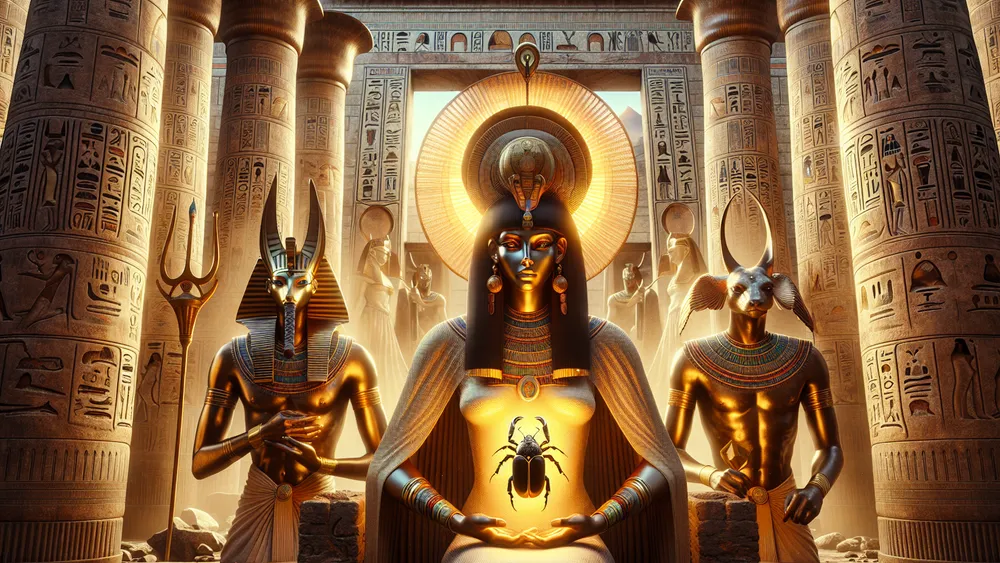
Symbols and visual signs in Egyptian art reveal essential qualities and powers of gods and their avatars, serving as unique identifiers like modern logos.
Avatars in Today’s Movies and Books
Avatars from Egyptian stories have shown up in today’s books and movies, often as powerful and unknown characters. For instance, in the movie “Gods of Egypt,” the god Horus is shown with his avatar form, which displays his change and divine powers.
Similarly, Rick Riordan’s “The Kane Chronicles” series brings Egyptian gods and their avatars to life, aimed at younger readers, making ancient stories accessible and interesting for them. These views mix traditional parts with creative freedoms, like how old books are changed into today’s films. They make old stories more engaging for current audiences while keeping the main ideas.
This modern way helps keep the rich collection of Egyptian stories alive and important in today’s culture.
Why Avatars Matter in Egyptian Religion
In Egyptian religion’s setting, avatars had deep religious importance by showing the gods’ strengths and qualities, making the gods more real and easy to reach for the people. Ancient Egyptians saw avatars as crucial go-betweens in their religious activities; in a way similar to how saints in Christianity show certain good qualities and speak for believers.
Avatars were important in events, certain activities, and everyday life, serving as central points for prayers, gifts, and talking to the gods. Various forms taken by avatars let gods interact in specific, meaningful ways with the human world, strengthening the link between the divine and the human realms.
This avatar system not only improved the religious experience but also gave a clear, organized way for old Egyptians to know and connect with their gods.
How Do Egyptian Avatars Compare to Others?
When looking at the idea of avatars in Egyptian stories against those in other stories, like in Hinduism, several interesting likenesses and differences appear. In both ways, avatars show as divine beings, letting gods interact with the human world in specific, intended ways.
For instance, just like the Hindu god Vishnu has ten avatars, each with separate roles and traits, Egyptian gods such as Ra and Hathor also have different avatars that show different parts of their divine selves.
But, while Hindu avatars often take on totally new identities and stories, Egyptian avatars usually show different forms or parts of the same god, similar to an actor playing different characters in one play. This small difference points out how each culture uses avatars to show complex religious ideas and keep a bond between the gods and human worlds.
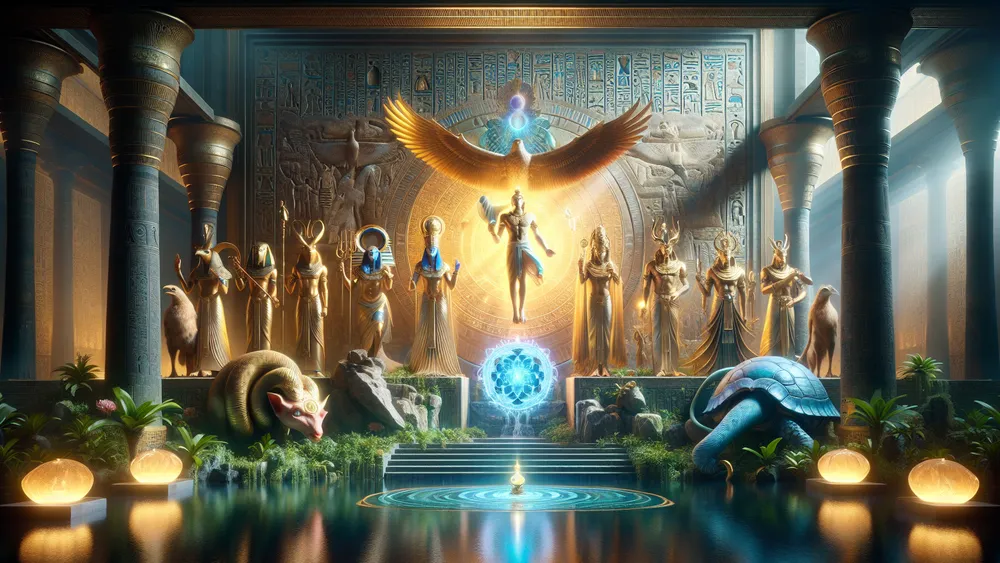
By seeing these likenesses and differences, one can understand the unique ways in which various stories handle the relationship between gods and their shows.
FAQs
1. What is the difference between an avatar and a god in Egyptian mythology?
The difference between an avatar and a god in Egyptian mythology is that an avatar is a physical manifestation or representation of a god, often used to interact with the mortal world.
2. Why did Egyptian gods need avatars?
Egyptian gods needed avatars to interact with the mortal world and convey their divine messages.
3. Are there any famous myths involving avatars in Egyptian mythology?
There are famous myths involving avatars in Egyptian mythology, such as the story of Horus taking the form of a falcon to defeat Set.
4. How are avatars depicted in Egyptian art and hieroglyphs?
Avatars in Egyptian art and hieroglyphs are often depicted with symbolic attributes and animal forms that represent the gods’ powers and roles.

